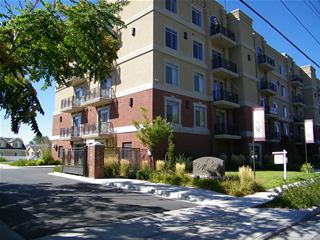Country United States County Salt Lake Named for Mill Creek Elevation 1,306 m Population 62,139 (1 Apr 2010) | State Utah Incorporated December 28, 2016 Time zone Mountain (MST) (UTC-7) Area 35.4 km² Area code Area codes 801 and 385 | |
 | ||
Millcreek is a city in Salt Lake County, Utah, United States, and is part of the Salt Lake City Metropolitan Statistical Area. Prior to its incorporation on December 28, 2016, Millcreek was a census-designated place (CDP) and township.
Contents
Map of Millcreek, UT, USA
History
The first settlers of the Millcreek area in 1848 included Mary Fielding Smith (widow of Hyrum Smith) and her children, including Joseph F. Smith. The area remained essentially rural in character until after World War II. As postwar suburban growth spilled south over the Salt Lake City limits, the area was not annexed by the city and remained unincorporated.
By the 1980s, most of the area now in Millcreek was built out and known by various names, including East Millcreek, Canyon Rim and Mount Olympus. In the 2000 census, the area was divided among four CDPs, the westernmost of which was designated Millcreek CDP. The population of this CDP was 30,377 at the 2000 census, and had a total area of 4.9 square miles (12.8 km²). Canyon Rim CDP, East Millcreek CDP, and Mount Olympus CDP were consolidated with Millcreek CDP in the 2010 census, doubling its population to 62,139.
Salt Lake County created Millcreek Township in 2002 as an administrative subentity that included the populated CDPs as well as undeveloped Mill Creek Canyon in the Uinta-Wasatch-Cache National Forest immediately to the east. The township was created to give residents of the area more local control over planning and prevent annexations by neighboring cities.
As other communities south of Salt Lake City were incorporated in the 1990s and 2000s, Millcreek remained as the most populous unincorporated area of Salt Lake County. Residents considered a number of options for their future, including incorporation, which would make it the county's fifth-largest city. Amalgamation with neighboring South Salt Lake was also proposed, which would have combined South Salt Lake's commercial and industrial base with Millcreek’s heavily residential character, creating a city of over 80,000.
The incorporation of Millcreek was the subject of a contentious 2012 ballot question, which set the boundaries of the proposed city identical to that of Millcreek Township, and asked voters what form of municipal government should be implemented. The initiative failed with only 40 percent of the vote, leaving Millcreek under the jurisdiction of the Salt Lake County Mayor and Council, as are other unincorporated areas of the county.
Despite the failure of the initiative in 2012, the question was put on the ballot again three years later, and Millcreek residents voted for incorporation on November 3, 2015. In the 2016 election, residents voted for a mayor and city council members in advance of incorporation, which was recorded at 9:30 a.m. on December 28, 2016.
Geography
Suburban in character, Millcreek is wedged between Salt Lake City and South Salt Lake on the north and Murray and Holladay on the south. Millcreek residents typically identify with Salt Lake City, which is designated by the U.S. Postal Service as the “default” place name for mailing addresses in the area. However, “Millcreek” is a recognized place name for addresses in the ZIP codes 84106, 84107, 84109, 84117, and 84124. The city is organized into four community councils, Canyon Rim, East Millcreek, Millcreek, and Mount Olympus, roughly corresponding to the former CDPs.
Climate
This climatic region is typified by large seasonal temperature differences, with warm to hot (and often humid) summers and cold (sometimes severely cold) winters. According to the Köppen Climate Classification system, Millcreek has a humid continental climate, abbreviated "Dfb" on climate maps.
Demographics
As of the census of 2000, there were 30,377 people, 12,545 households, and 7,363 families residing in the CDP. The population density was 6,160.5 people per square mile (2,379.0/km²). There were 13,403 housing units at an average density of 2,718.1/sq mi (1,049.7/km²). The racial makeup of the CDP was 87.07% White, 1.57% African American, 1.24% Native American, 3.11% Asian, 0.64% Pacific Islander, 3.34% from other races, and 3.04% from two or more races. Hispanic or Latino of any race were 9.15% of the population.
There were 12,545 households out of which 28.0% had children under the age of 18 living with them, 40.8% were married couples living together, 13.1% had a female householder with no husband present, and 41.3% were non-families. 31.9% of all households were made up of individuals and 11.1% had someone living alone who was 65 years of age or older. The average household size was 2.34 and the average family size was 2.97.
In the CDP, the population was spread out with 23.0% under the age of 18, 14.2% from 18 to 24, 31.1% from 25 to 44, 16.8% from 45 to 64, and 14.8% who were 65 years of age or older. The median age was 31 years. For every 100 females there were 90.7 males. For every 100 females age 18 and over, there were 86.1 males.
The median income for a household in the CDP was $38,211, and the median income for a family was $43,342. Males had a median income of $31,688 versus $25,470 for females. The per capita income for the CDP was $20,199. About 8.4% of families and 11.1% of the population were below the poverty line, including 14.0% of those under age 18 and 5.4% of those age 65 or over.
